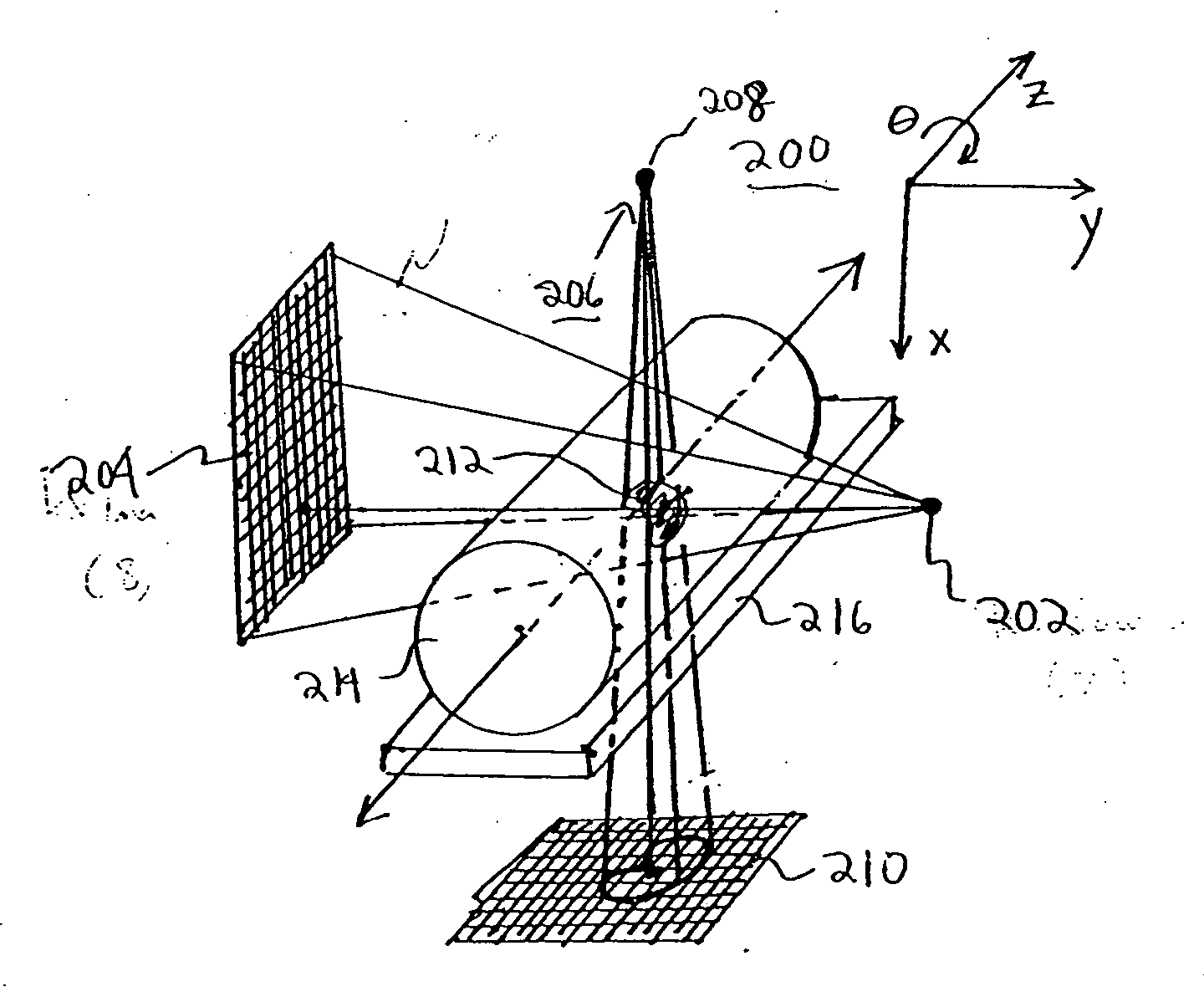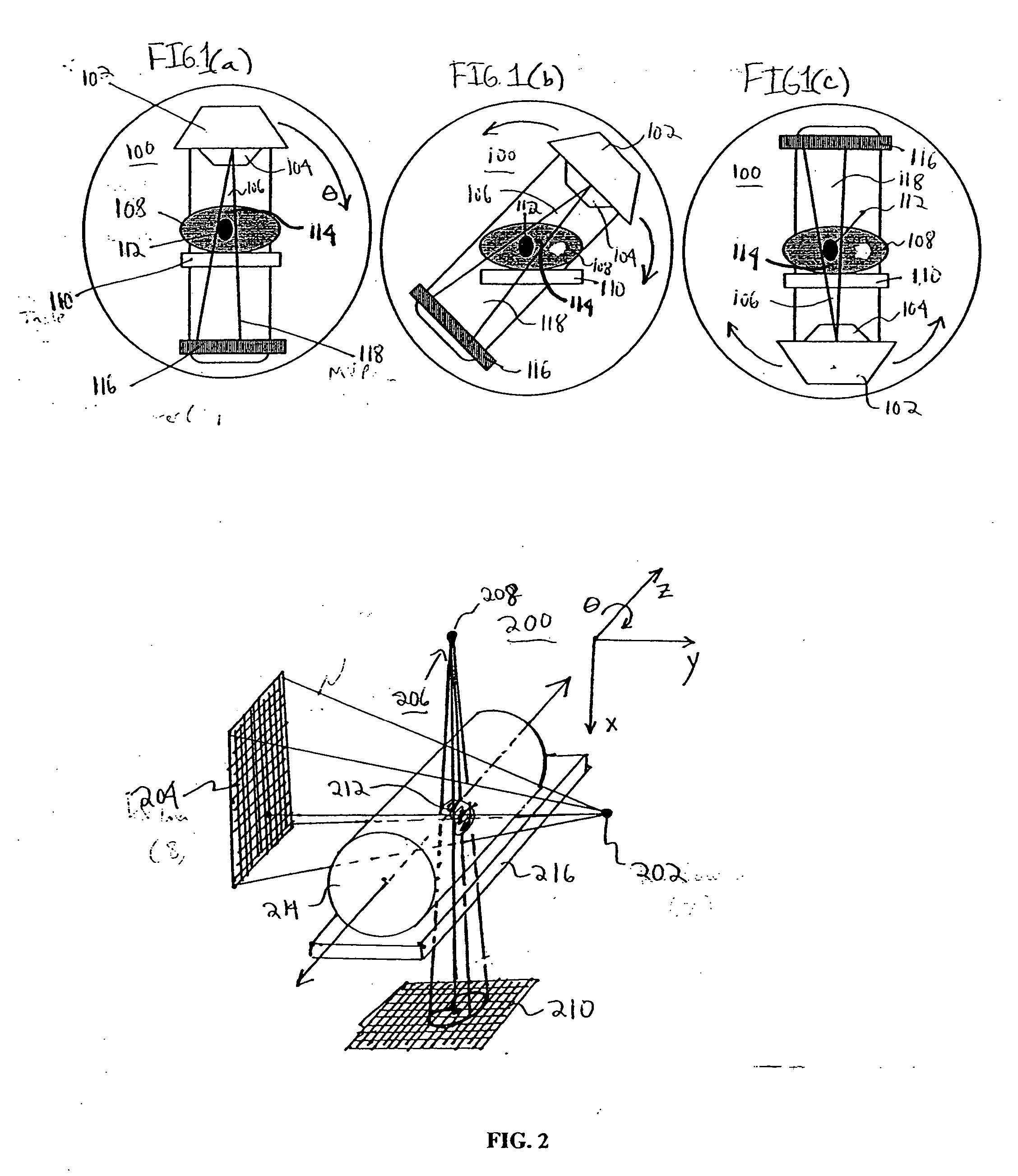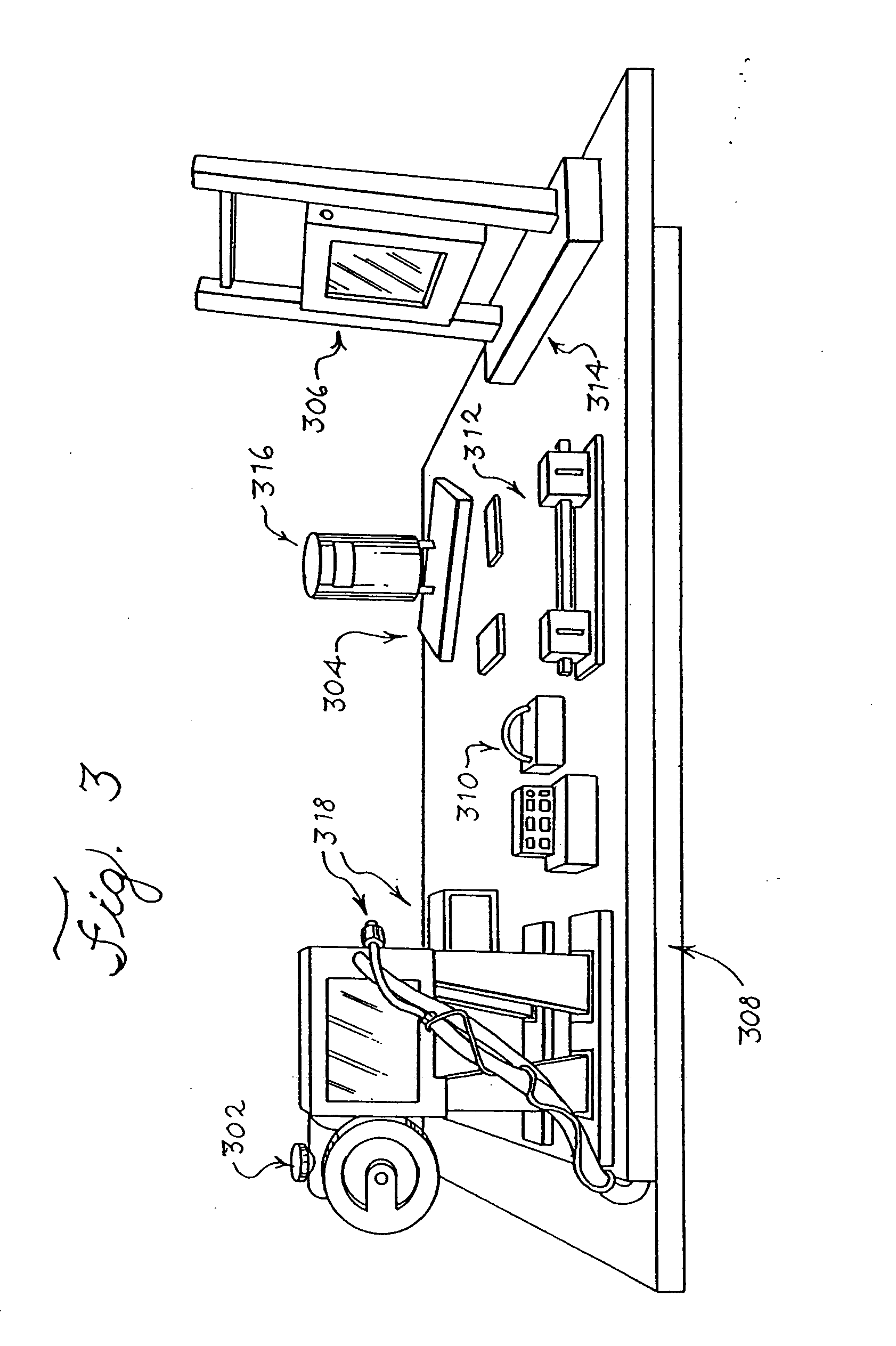Cone beam computed tomography with a flat panel imager
a computed tomography and flat panel imager technology, applied in the field of cone beam computed tomography system, can solve the problems of limited delivery of increased dose, increased volume of normal tissue, intrafraction errors, etc., and achieve the effect of reducing radiation treatment errors, improving radiation therapy precision, and adequate visualization
- Summary
- Abstract
- Description
- Claims
- Application Information
AI Technical Summary
Benefits of technology
Problems solved by technology
Method used
Image
Examples
Embodiment Construction
[0053] A bench-top cone beam computerized tomography (CBCT) system 300 is shown in FIG. 3, according to an embodiment of the present invention. The CBCT system 300 was constructed to mimic the geometry of the CBCT scanner currently installed on a linear accelerator, with a source-to-axis distance of 1000 mm and a source-detector distance of 1600 mm. The primary components of the system 300 include an x-ray tube 302, a rotation stage 304 and flat-panel imager (FPI) 306. These components are rigidly mounted to an optical bench 308. The relative position of these components is controlled by three translation stages, including an xobject stage 310, a yobject stage 312 and a yimage stage 314, which are used during initial setup to accurately determine and control the imaging geometry. The cone beam computerized tomography system 300 generates images of an object 316, identified throughout as a phantom, mounted on the rotation stage 304. Each stage 310, 312 and 314 contains a home or limi...
PUM
 Login to View More
Login to View More Abstract
Description
Claims
Application Information
 Login to View More
Login to View More - R&D
- Intellectual Property
- Life Sciences
- Materials
- Tech Scout
- Unparalleled Data Quality
- Higher Quality Content
- 60% Fewer Hallucinations
Browse by: Latest US Patents, China's latest patents, Technical Efficacy Thesaurus, Application Domain, Technology Topic, Popular Technical Reports.
© 2025 PatSnap. All rights reserved.Legal|Privacy policy|Modern Slavery Act Transparency Statement|Sitemap|About US| Contact US: help@patsnap.com



